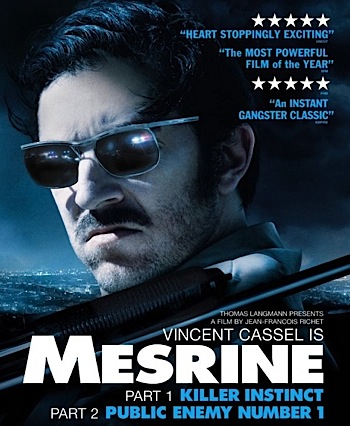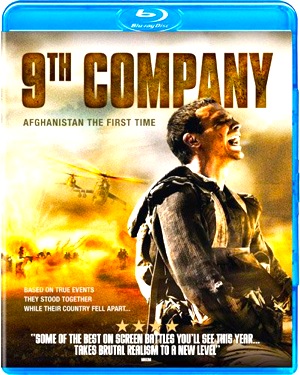By Jason Apuzzo. Today we bring some special news to Libertas readers. Kalifornistan, a film starring LFM Co-Editor Govindini Murty, and which I wrote and directed, will be opening the Free Thinking Film Festival in Ottawa, Canada this November 12th.
The Free Thinking Film Festival is designed by its founder Fred Litwin to celebrate “limited government, free market economics, and the dignity of the individual.” We’re very honored that Kalifornistan was chosen to open the festival for its Opening Night Gala, an event which will also serve as a fundraiser for the Military Family Resource Centre – which helps military families in Canada. Tickets for this event are available here.
 Other films in the festival include: Cyrus Nowrasteh’s The Stoning of Soraya M (Closing Night Gala, with Cyrus attending), Florian Henckel von Donnersmarck’s The Lives of Others, Andrzej Wajda’s Katyn, HBO’s documentary For Neda (which we showed in its entirety here at Libertas) and a multitude of interesting documentaries including: Crossing the Line, Outside the Great Wall, Decryptage, The Cartel, Generation Zero, Do As I Say, Mine Your Own Business and others.
Other films in the festival include: Cyrus Nowrasteh’s The Stoning of Soraya M (Closing Night Gala, with Cyrus attending), Florian Henckel von Donnersmarck’s The Lives of Others, Andrzej Wajda’s Katyn, HBO’s documentary For Neda (which we showed in its entirety here at Libertas) and a multitude of interesting documentaries including: Crossing the Line, Outside the Great Wall, Decryptage, The Cartel, Generation Zero, Do As I Say, Mine Your Own Business and others.
The full festival line-up is available here.
We want to thank Fred Litwin and his team for choosing Kalifornistan to open the festival. We’re very honored to have Kalifornistan in the company of the many exceptional films and filmmakers being gathered together for this exciting event. I’ve put the trailer for Kalifornistan above, and you can visit Kalifornistan’s website here.
I also want to congratulate Fred for putting on this festival to begin with. Freedom of thought within the film world is something that needs to be promoted at every opportunity; it is, indeed, the very basis for our having started The Liberty Film Festival back in 2004 and Libertas back in 2005, and for bringing Libertas back in its current form earlier this year. It isn’t sufficient to simply complain about the state of free speech in the film world; action and activity are required to foster and encourage emerging voices. So we applaud Fred for putting this event on, and encourage everyone to attend. Having done the Liberty Film Festival ourselves, we know how challenging these events can be – and also how necessary they are, given the current state of our film culture.
Here’s a description of Kalifornistan from the Free Thinking Film Festival website:
In the shadowy Port of Los Angeles, an insane terrorist stalks a beautiful dancer … while plotting the nuclear apocalypse he hopes will make him a celebrity. KALIFORNISTAN is a darkly comic satire on terrorism made by Canadian actress and filmmaker Govindini Murty and American filmmaker Jason Apuzzo. KALIFORNISTAN follows the deranged leader of a terror cell called ‘Glorious Jihad of Kalifornistan’ as he plots to destroy Los Angeles with a nuclear bomb – while being distracted by a sultry exotic dancer. KALIFORNISTAN fuses film, video, documentary and surveillance footage into a cutting-edge narrative on the violence, narcissism and delusional fantasies that fuel contemporary Islamic terrorism. KALIFORNISTAN takes viewers on a twisted journey of the post-9/11 world from Gitmo to Iran, from the dark corners of LA harbour into the mind of a terrorist too deranged even for Al Qaeda.
Human Events says of KALIFORNISTAN: “The film clicks as strong, effective satire … Kalifornistan … dares to see the average terrorist for what he truly is — a laughably warped soul with a world view shaped by Islamic radicalism — and too many extremist blogs … and once you meet the terrorist at the heart of the film you’ll wonder why more filmmakers haven’t taken this approach before.” LA’s Daily Breeze says that “Kalifornistan may be the South Bay’s 21st century cinematic equivalent of Gone in 60 Seconds, the 1974 cult classic.” Online journal Rational Review says that KALIFORNISTAN “is beautifully shot” and “it’s Fellini meets Kubrick.”

We had a lot of fun making Kalifornistan. And I’d like to think that Kalifornistan is imbued with the same kind of spirit that we bring here to Libertas every day: a spirit of fun, good humor, edginess, a completely uncompromising look at very controversial subjects … and really sexy women. 🙂 Kalifornistan is basically an art-house/cult film on a subject that most people in Hollywood are too afraid to touch: the sexual fantasies that fuel many young Islamic terrorists. You can check out an extensive interview I did about the film here.
Our ‘Libertas pin-up’ in Kalifornistan is Govindini, of course – although she provides a great deal more than just eye candy in this film … not that that isn’t important, by the way. But I’m also quite proud of her performance in the film – which required her to be believable not only as an exotic dancer, but as someone who can realistically confront a terrorist. [Of course, as anybody who knows Govindini will tell you, it’s not hard to imagine her doing that.]
Govindini was also the film’s executive producer, story editor, and was invaluable in the final shaping of the film’s retro-‘documentary realist’ style – a style which she and I are both quite passionate about. She was a vital force behind this film, and there’s quite simply no way I could’ve made it without her.
One other note: LFM Contributer Steve Greaves wrote and performed the cool, retro-60s music score in Kalifornistan, which you hear in the trailer above. Steve did a great job on Kalifornistan’s soundtrack, on a very tight deadline, and I’m looking forward to working with him again in the near future.
Even though Kalifornistan was shot on a modest budget, the film has a lot of personality – which, in my opinion, is what an indie film always needs to have. If you haven’t had the chance to see Kalifornistan, we encourage you to pick up a copy here.
Of course, if you think Kalifornistan has a lot of personality, wait till you see the next film we’re doing …
Again, our thanks to Fred Litwin and the Free Thinking Film Festival, and we encourage everyone to get their tickets for this great event today. We expect tickets for this event to go fast. The Free Thinking Film Festival will be taking place at the National Archives – adjacent to Parliament Hill, in Ottawa, Canada. Incidentally, Govindini is a proud Ottawa native, and is delighted that free thinking films are coming to the fine citizens of Canada’s capitol.
Posted on September 8th, 2010 at 11:23am.





